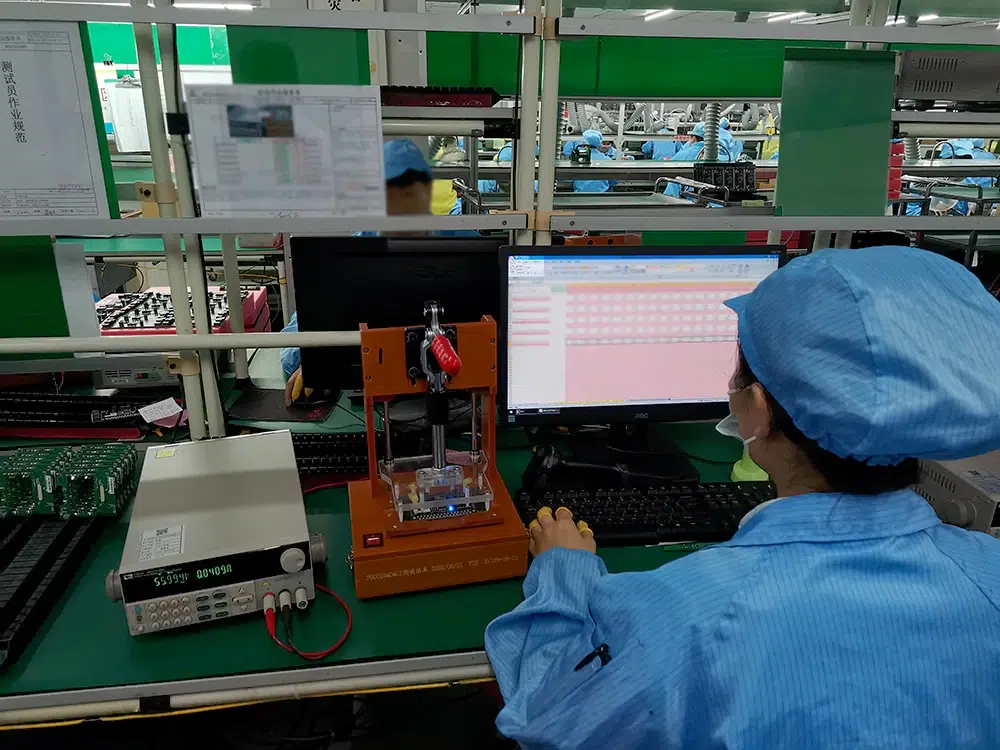PCBA, also known as printed circuit board assembly or circuit board assembly, is the core of electronic products. It is a product made of electronic components fixed on a printed circuit board by welding or other means. After a product is produced, strict PCBA inspection and testing is required to ensure its normal function. The inspection conditions and standards for PCBA boards vary slightly depending on the product, but generally there are some universal conditions and standards.
1. Visual inspection: This is the most basic inspection standard. It mainly checks the appearance of the circuit board, including the quality of soldering, whether the components are installed correctly, whether the components are damaged, etc. PCBA inspection is usually done with the naked eye or a microscope. According to the standard, there are no obvious burns, the solder shape is normal, there are no false soldering, empty soldering, or missing soldering, and the components are not tilted, offset, or misaligned.
2. Electrical testing: Electrical performance testing of PCBA circuit boards is an essential step. This mainly involves measuring voltage, current and impedance at various points on the circuit board to ensure the circuit is functioning properly. According to the design requirements, the electrical parameters of each point need to be within the specified range.
3. Functional testing: After the circuit board is assembled, functional testing needs to be performed to ensure that it meets the design requirements. This includes testing of various functions such as signal processing capabilities, noise levels, power consumption, etc. The specific test standards depend on the design goals and application scenarios of the circuit board.
4. Environmental adaptability test: Depending on the use environment of the product, it may be necessary to test environmental conditions such as temperature, humidity, vibration, etc. Conduct high and low temperature, hot and humid environment tests on circuit boards to verify their performance and reliability in various environments.
5. Reliability test: The circuit board needs to withstand a certain period of aging testing to ensure its long-term stable operation. This includes thermal shock test, pressure test, fatigue test, etc. to check its reliability.

Inspection standards are usually based on product design requirements, as well as some international, national and industry standards, such as IPC (International Electronics Industry Confederation) standards. Good product quality is the ultimate goal of PCBA inspection, and all testing and inspection should serve this goal.
The selection of test methods, the setting of test environments and the determination of test standards should all be oriented to product quality. In addition, circuit board manufacturers also need to have a complete quality management system to ensure the standardization and standardization of circuit board production and inspection work.
Non-destructive testing: In order not to damage the integrity of the circuit board, non-destructive testing is also a commonly used inspection method. For example, X-ray inspection methods can be used to observe the soldering quality and component installation inside the circuit board.
Testing of materials and processes: The performance of PCBA boards not only depends on the design, but also on the materials and processes. Therefore, it is also necessary to detect the raw material quality of circuit boards and the process parameters of the production process. For example, the quality of the substrate and copper foil of the circuit board is tested, and the surface treatment process of the circuit board such as gold plating, tin plating, etc. is evaluated.
Non-routine testing: In addition to some of the above-mentioned conventional tests, some special tests may also be required, such as electromagnetic compatibility testing, flame retardancy testing, etc., to meet specific application requirements.

When determining inspection conditions and standards, it is necessary to consider not only the design requirements of the product, but also the actual application environment and usage conditions of the product. At the same time, it also needs to be formulated in conjunction with relevant industry standards, national standards and international standards.
In order to ensure the accuracy and consistency of PCBA inspection results, the calibration and maintenance of inspection equipment is also very important. Data recording and analysis during the inspection process are also important links in ensuring product quality.
In general, PCBA inspection is a comprehensive and complex process that requires consideration from multiple perspectives. Through strict inspection, the performance and reliability of the circuit board can be ensured, thereby ensuring the quality of the final product.










